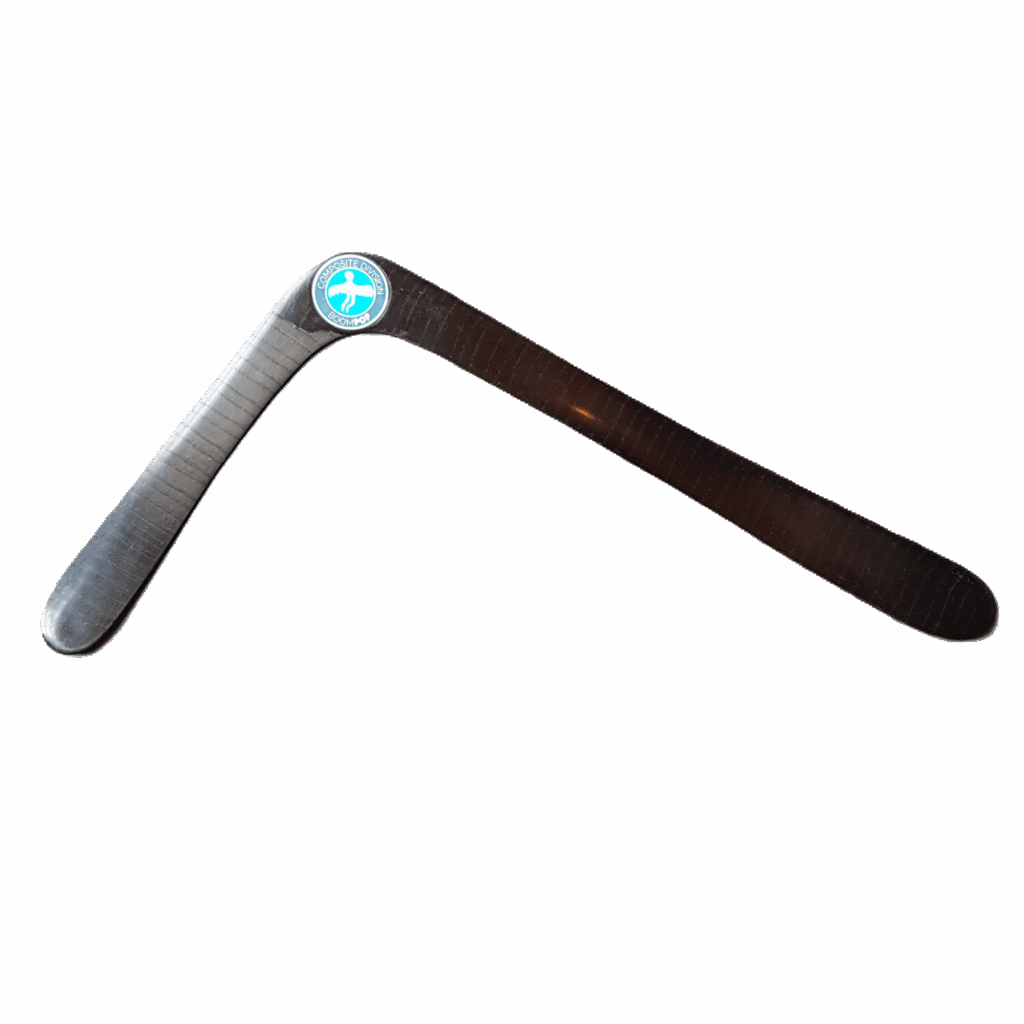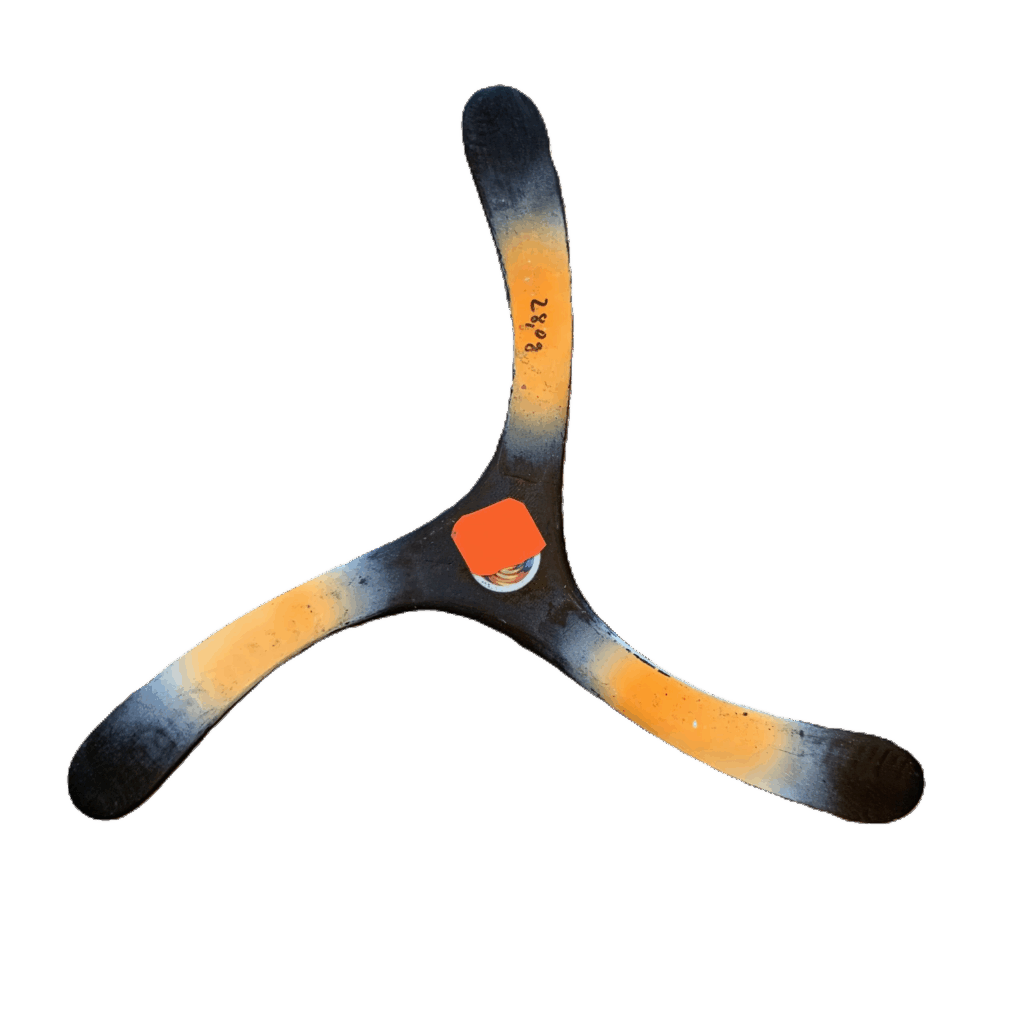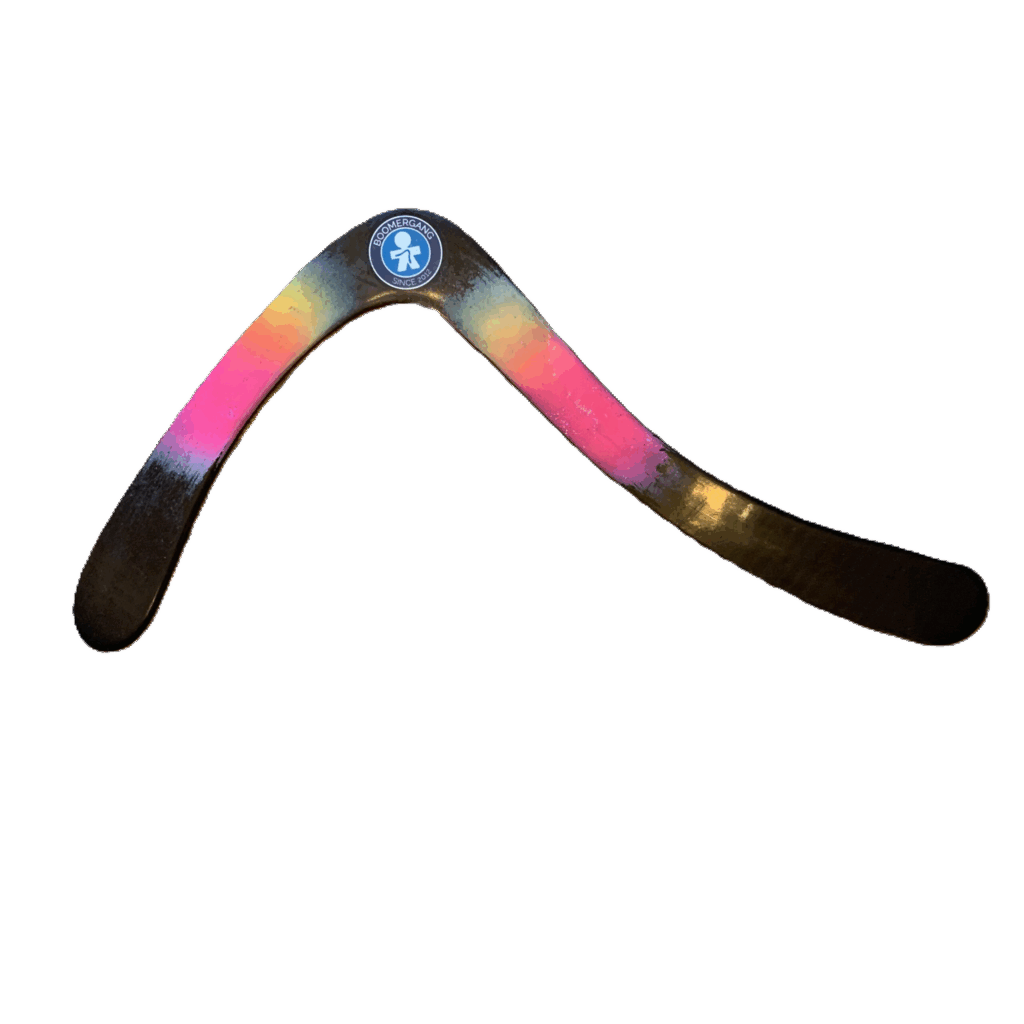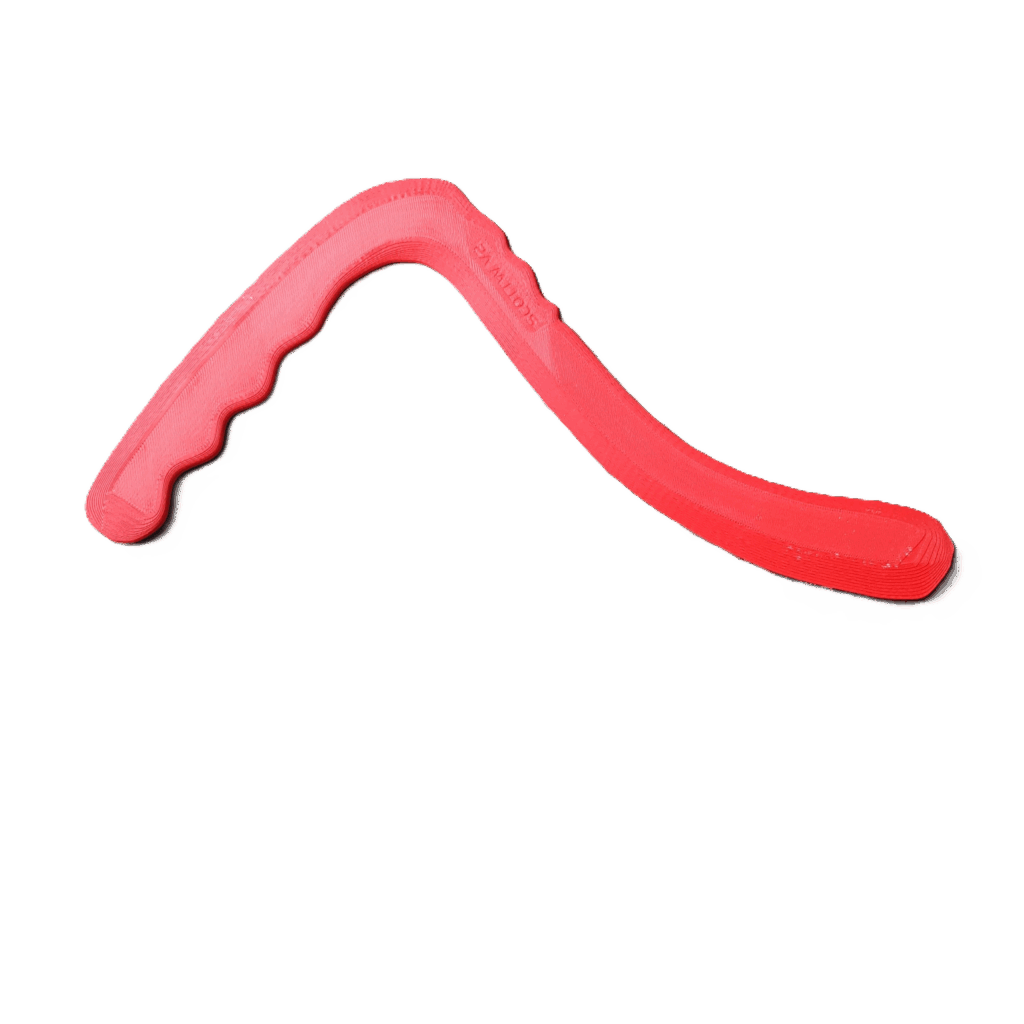In this blog post the following will be discussed of MTA’s
- What is MTA?
- Types of MTA’s
- How to Throw MTA’s
- What materials are used
- How to get better? My personal view
- Views from other throwers
What is MTA?
MTA stands for Maximum Time Aloft. They are a subset of boomerangs that are meant to hover as long as possible in the air. They are lighter than regular boomerangs.
Types of MTA’s
MTA’s are commonly divided in three categories, however I will include a fourth one:
Low Wind

Medium Wind

High Wind

Medium-High Wind

Low MTA’s are usually a classical windsailor type of shape: one long and one shorter wing, quite straight. They usually don’t go far in front and potentially spiral upwards.
Medium wind MTA’s are usually with a slight curve in the wings, notably the leading wing which is swept back
High Wind MTA’s are usually tribladers, a potential trailing edge undercut is present to make it go further in front
In recent years, more development has been towards hybrid shapes, such as the M or flat MTA’s. Usually they are more flat and sometimes contain trailing edge undercuts to make it go further in front.
How to throw MTA’s?
MTA’s are tricky to throw right. You need a right combination of spin power, which differs for every MTA made. It depends on the tuning. A general description of a template throw would be as follows: A vertical – no layover – throw and thrown high (let’s say 45 degrees up).
Since the MTA’s are lighter, you need to take the wind into account more. Especially in competition since you are limited to catching it in a 100 diameter circle. It depends per MTA but sometimes you better throw into the wind or aggressively off the wind (I have seen some people throw away from the wind if the wind is very low, I personally don’t) . In competition you have to find a location closer to the boundary of the circle towards the wind to account for the wind direction.
I usually throw my windsailors extremely low so they spiral up in the air, however other throws prefer to throw them overly high. This depends on your throwing preference and tuning. The other type of shapes I throw more in a classical way (see template throw). Some throwers prefer to throw with layover and some with negative layover. for windsailors I prefer to throw them vertically, while the others I throw with negative layover to make them go further in front, this also depends on the tuning of your boomerang.
What Materials are used?
The sport is dominated by molded composite MTA’s mainly made from carbon fiber. However, there are several options that can work really well. For example, 2-3mm aircraft grade Finnish plywood (or custom pressed sheets), phenolic and carbon fiber sheet. Some options such as 3d printed options work, but are not on par with the rest.
Carbon Fiber Molded

Wood

Phenolic

Sheet Carbon

3d Printed

The benefit of molded carbon fiber MTA’s is it keeps it tuning extremely well, while wooden, phenolic and plastic based MTA’s can get floppy and/or detune quickly. Additionally, molded carbon fiber can usually be made lighter and that makes them potentially fly longer (if we take the effect of thermals away).
Though, having a bit more weight in your MTA can be useful, since it can go further if it is heavy and go higher, which usually happens with hybrid or medium wind shapes in phenolic or carbon fiber sheet.
Nils’s personal View
MTA is a tricky event. A few things have to come together for you to get good scores. For most of the competitions I visited I got a podium place on MTA, so there are ways to optimize your chances of getting better scores.
1. First of all, you have to understand your MTA, don’t fight against it, but alter your throw to get the best out of it. This means finding ‘optimal’ throwing angles and limit your power if needed. In most events I simply power-through if the conditions are less favorable, however with MTA, this is partially right. Obviously having a lot of power and spin is a benefit, however too much might mess up your throw if has trouble stabilizing afterwards. For me this is a very common problem when I receive an boomerang from someone else, often it simply can’t handle my throw. Therefore my second point:
2. Tune your mta’s yourself. I always bring a gas torch (in specific a Proxxon toch used for jewelery making) and gas with me on the field. I get it, your carbon fiber boomerang looks ultra pretty when you get it. So what? If it flies shit, tune it – and yes you might mess it up! MTA’s can be considered like any other shape, however just more extreme, that’s how I look at it. Any tuning you do will have a big effect and knowing how to tune and when to tune is a big skill that will also translate into your other boomerangs. Besides heat tuning, playing around with weights can be a huge advantage. For example, this year I have been retuning all my brakets (medium wind shape) to have weights under the tips and elbow for an overly negative layover higher power throw.
3. During competitions, observe what other throwers do – ones you know are good throwers. Look at how they predict the wind and take an educated guess based on your knowledge and their positioning. Are you on a field with fluctuating winds then once there is an opportunity to go with your windsailor, just throw it, since you might not get these conditions again. Some people will tell you to play it safe, I partially disagree, I don’t go to competitions to get safe scores, I go there to get the best scores. So just go for it and have fun. You got 5 throws and you can screw up 4, as long as you stay confident (yes: never doubt your throw, only doubt the wind) you will get your 5th. If you want a better spot in the final rankings, getting a score above 40 seconds is usually enough – and very doable if you don’t rely on thermals. Though, one thing to keep in mind is that you might throw harder during your competition round due to nerves, factor this into account. I usually use my first throw to test the waters, if perfect conditions, go all in and with a crazy risky throw, otherwise throw in a way that you get information about the conditions and get a ‘safe score’.
4. If you are with good thrower in your group. Ask that person to follow you during your throw and run downwind. The other person will shout when you have to stop! This is incredibly important in windier conditions. I have seen plenty of people mess up the catch because they couldn’t position properly. Also, catch low not high. When it is low you get more seconds on the clock and it is easier to catch. Snatching it above your head is simply harder and worse.
5. Study throws from other throwers, in particular Manu’s technique. One key take away from his throw is starting with your hand low, this forces to use your whole body to generate way more power. Since I started doing that, I got 5-10 seconds extra on each flight.
Al’s personal View
MTA boomerang basically need requires good timeliness. There is so many techniques out there we known as a step to get the best time record. However, I personally my own way to getting the best time. as a broader note, i’ll explain it widely;
1. You must to check your ground field. Sometime you will found darker ground between 10 metres radius of throwing. As a good step, you must be on it. Darker ground causes by intense sunlight radiation on that point, which mean it indicating would have amount of thermal or hot balloon on air. If you thrown that you’ll able gaining more time to achieve more minute of flight.
2. Choose a right boomerang, more spesifically is find a right MTA fits in your hand. Nowadays there is average throwers full-time using Composite material because the material are light, efficient thermal sensitive, but also trickiest because you should have to careful not cracking them during adjustment or thrown. Mostly sensitive material and expensive.
Occasionaly were Thrower used more variations material like Paxolin or Phenolic. Those material is early famous since 80s, they cheap, easy to find, and tunnable material. Those material more durable than Composite but aren’t tolerant mass as light as composite do. As a important note, in boomerang game i could do say, whatever material you choose for boomerang is about functionally belong on what on conditions you have. Composite are expensive than Paxolin or Phenolic, and also average composite is lighter than Phenolic if we in some condition having a highwind we have to choose more mass than material like Composite. Paxolin or Phenolic is good decision for that condition, even those material is good for people to starting learn MTA.
3. And when you want to throw, there is a technique you must have to know. Usually known among throwers is MTA should have a higher point of aim-throwing with very slighty negative lay-over ( in case for right-handed thrower). But i’d classified in my own way there is 2 things you should have to know. First, i used higher shoot around 70°degree and slightly negative layover around 80°degree is more efficient for calm wind condition. Because we have to get higher flight. Second, medium shoot around 50° – 60°degree and 90° degree layover to throw in medium and high wind. In this case i wanted efficient glider onto skies, and also my currently MTAs for that it has a 50 – 90m to push low risk of lossing it out of vision.
That’s my whole explain about MTAs. There so many variations and complicated things, important thing is just do in your own way.
Views from other throwers
Lars Overzee
I train MTA the least due to a lack of space, though I usually get ‘decent’ scores in competition.
When I haven’t trained enough I am usually struggling to get a perfect high vertical throw, which also stabilizes properly. To tackle this I am usually tempted to add a bit of layover to my throw with full-power to get the best out of the boomerang
Alejo Palacio
I am afraid afraid that a good throw in MTA depends mostly on luck and thermals, however the throw and mechanics of the release is to be focused on!
Logan Broadbent
1. In many competitions they combine your best 3 of 5 throws. Typically, I’m stuck between a conservative (safe, often three-bladed) boomerang which I know will be stable and not blow out but may not stay up as long, and an aggressive (often two-bladed) boomerang that may require a more precise throw, be less forgiving, and be more likely to drift out of the field boundary. I use the following methodology… First throw – Throw your conservative boom to put a score on the board and shakeout any nerves. Second throw – If you caught your first throw, throw the more aggressive boom and see how it works in those conditions (if you didn’t catch the first boom, throw safe again). Third throw – Completely dependent on your first two throws. If the first two throws went well, throw whichever boom flew the longest. If either dropped, throw the safer more-stable boomerang. Fourth throw – If you have three scores, go BIG! Use the aggressive boomerang and throw it hard and high! If you have two scores, bring both boomerang’s to the circle with you and decide based on conditions at that moment. Fifth throw – If you have three qualifying score, throw BIG again! If you have two score, throw the safest boomerang you have and just collect more seconds to salvage your round!
2. Always perform a practice throw prior to your actual throw in the circle (not with the boomerang in your hand as you can risk it slipping out causing you to score a 0). A practice throw allows you to visualize your competition throw and create muscle memory for the perfect release.
3. Error into the wind. Often throwers throw too far to the right of the wind which causes their boomerang to crash or drift outside of the boundary. MTAs are typically thrown higher, more vertical, and more into the wind than other boomerangs.
4. Get down wind!!! Don’t stand there and watch your boomerang in amazement. You can celebrate after you’ve caught your awe-inspiring throw. RUN!!! Get downwind of your boomerang then work your way back toward the catch as it descends. Rookies chase their boomerangs and try to catch them mid stride as they are drifting away from them. Champions know to get beyond their boomerang and let it come to them.
5. Winning happens before you get to the competition. Practice with your MTAs by categorizing each one and writing down your flight times. A single throw won’t tell you much but tracking your flight times over dozens of throws will help you learn which of your boomerangs are truly the best, most reliable, and should be used in competition.
Manuel Schütz
Important for the MTA throw? Not that much different compared with other throws. You need your whole body. I remember that there’s a video on youtube where different throwers are compared:
